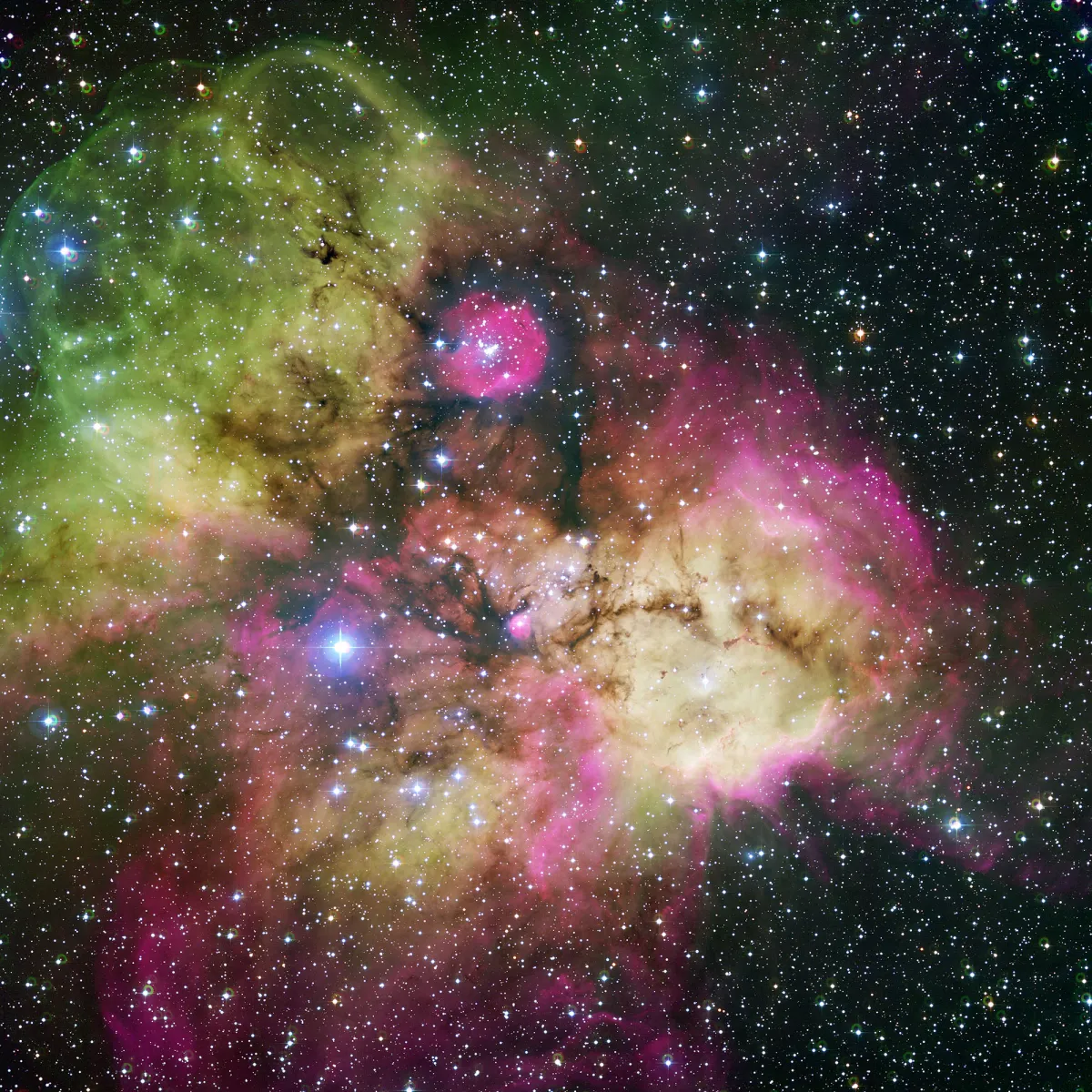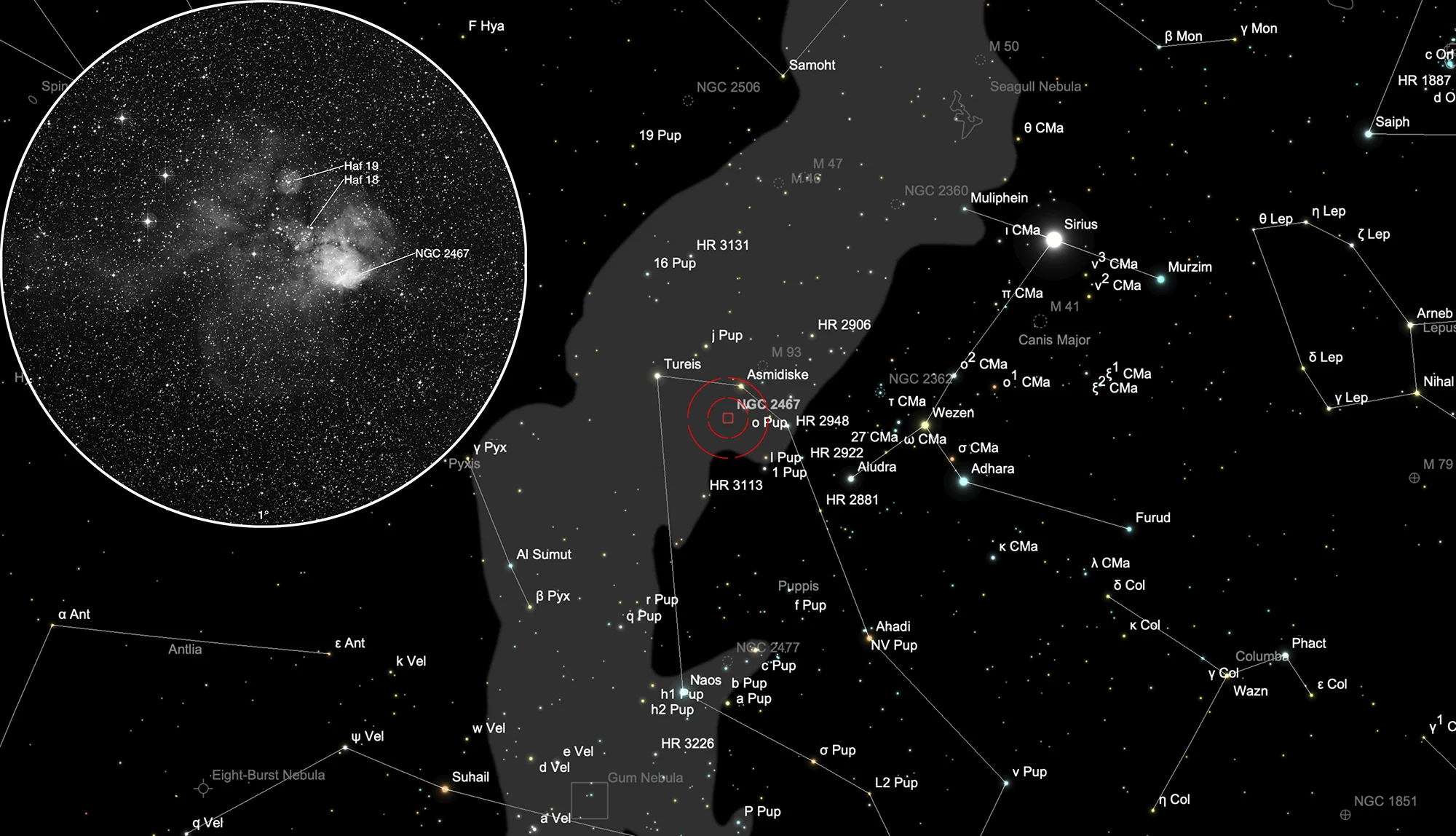Galactic Nebula NGC 2467

History
On 9 December 1784 William Herschel found an object using his 18.7 inch reflecting telescope that he put as 22nd entry (IV 22) into his fourth class which included planetary nebulae, stars with burs, with milky chevelure, with short ray, remarkable shapes and others. He described the object as follows: «Large, pretty bright, round, easily resolvable, 6 or 7' diameter, a faint red colour visible. A star of 8th magnitude not far from the centre, but not connected. Second observation 9 or 10' diameter.» [463] John Herschel described the object h 472 in 1833 as: «A star 9th magnitude with a W of stars and nebulosity, or ? if not a very faint nebula about the stars - (no red colour seen).» [466] Dreyer listed this object as NGC 2467 in his «New General Catalogue». [313]
Physical Properties
NGC 2467 is a is a very active starforming region, involved in an nebula of dust and ionized gas. It contains the open clusters Haffner 18 and 19. The age is estimated to a few million years at most. The bright star in the centre of the brightest region is HD 64315, a massive young star, which is helping to shape the whole nebula structure. [591]
| Designation | NGC 2467 |
| Type | EN+OCL |
| Right Ascension (J2000.0) | 07h 52m 26.0s |
| Declination (J2000.0) | -26° 26' 12" |
| Visual magnitude | 7.1 mag |
| Metric Distance | 1.355 kpc |
| Dreyer Description | pB, vL, R, er, * 8 M |
| Identification, Remarks | WH IV 22; h 472; GC 1589; LBN 1065; OCL 668; ESO 493-SC25 |
Finder Chart
NGC 2440 is located in the constellation Puppis. Due to its southern location, the best observation time is between November and February.
